Only fools mess around with bees, wasps, and hornets as they collect nectar and go about their business while visiting flowering plants. Relentlessly curious predators and other trouble makers quickly learn that patterns of white, yellow, or orange contrasting with black are a warning that the pain and anguish of being zapped with a venomous sting awaits those who throw caution to the wind. Through the process of natural selection, many venomous and poisonous animals have developed conspicuously bright or contrasting color schemes to deter would-be predators and molesters from making such a big mistake.
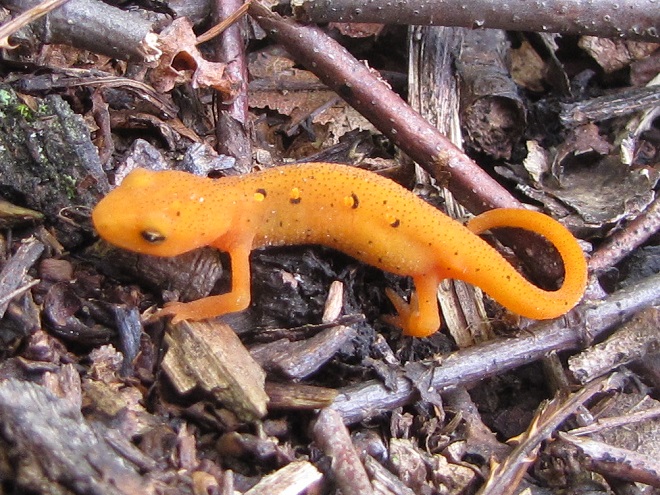
Visual warnings enhance the effectiveness of the defensive measures possessed by venomous, poisonous, and distasteful creatures. Aggressors learn to associate the presence of these color patterns with the experience of pain and discomfort. Thereafter, they keep their distance to avoid any trouble. In return, the potential victims of this unsolicited aggression escape injury and retain their defenses for use against yet-to-be-enlightened pursuers. Thanks to their threatening appearance, the chances of survival are increased for these would-be victims without the need to risk death or injury while deploying their venomous stingers, poisonous compounds, or other defensive measures.

One shouldn’t be surprised to learn that over time, as these aforementioned venomous, poisonous, and foul-tasting critters developed their patterns of warning colors, there were numerous harmless animals living within close association with these species that, through the process of natural selection, acquired nearly identical color patterns for their own protection from predators. This form of defensive impersonation is known as Batesian mimicry.
Let’s take a look at some examples of Batesian mimicry right here in the Lower Susquehanna River Watershed.
Suppose for a moment that you were a fly. As you might expect, you would have plenty to fear while you spend your day visiting flowers in search of energy-rich nectar—hundreds of hungry birds and other animals want to eat you.


If you were a fly and you were headed out and about to call upon numerous nectar-producing flowers so you could round up some sweet treats, wouldn’t you feel a whole lot safer if you looked like those venomous bees, wasps, and hornets in your neighborhood? Wouldn’t it be a whole lot more fun to look scary—so scary that would-be aggressors fear that you might sting them if they gave you any trouble?
Suppose Mother Nature and Father Time dressed you up to look like a bee or a wasp instead of a helpless fly? Then maybe you could go out and collect sweets without always worrying about the bullies and the brutes, just like these flies of the lower Susquehanna do…
FLOWER FLIES/HOVER FLIES
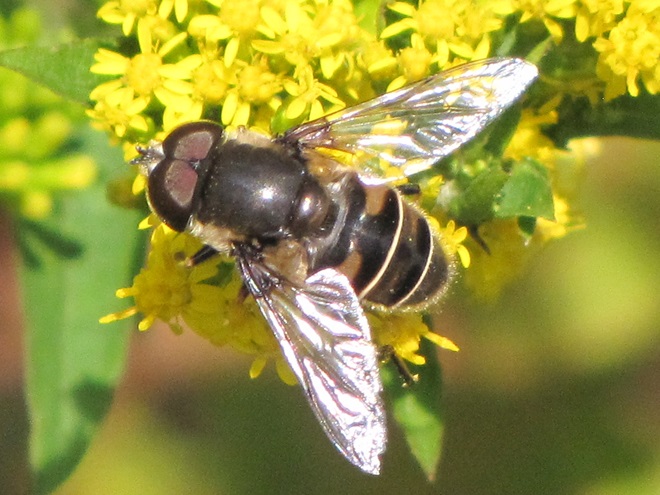
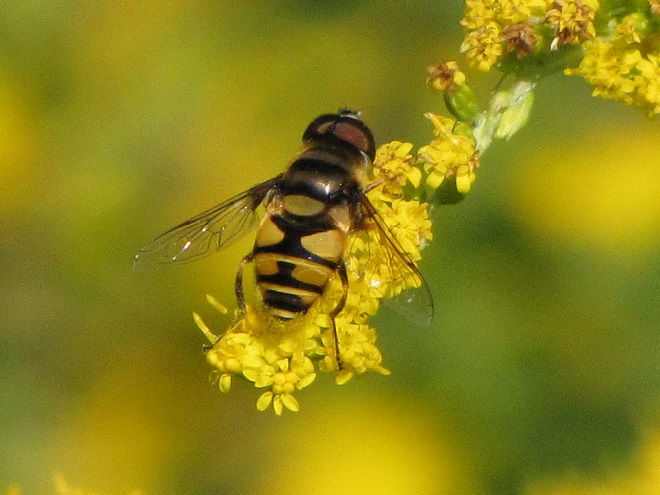
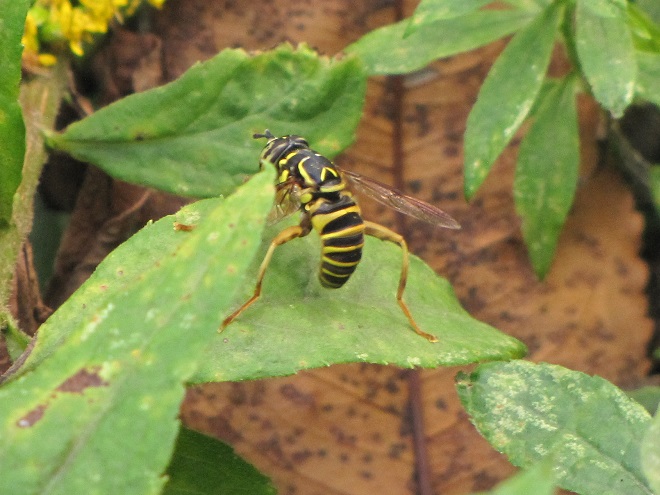

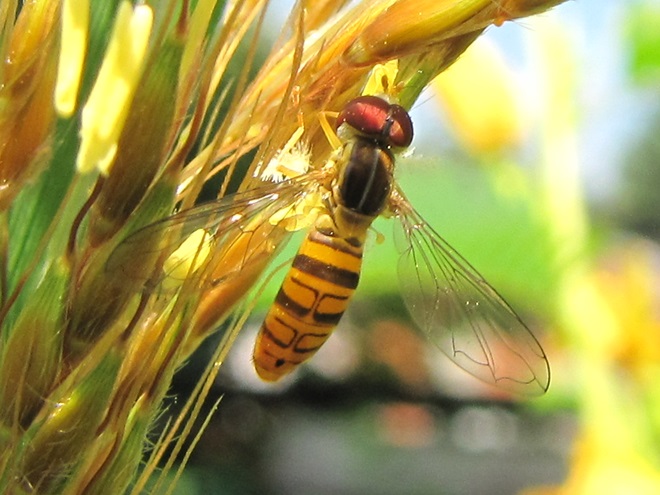

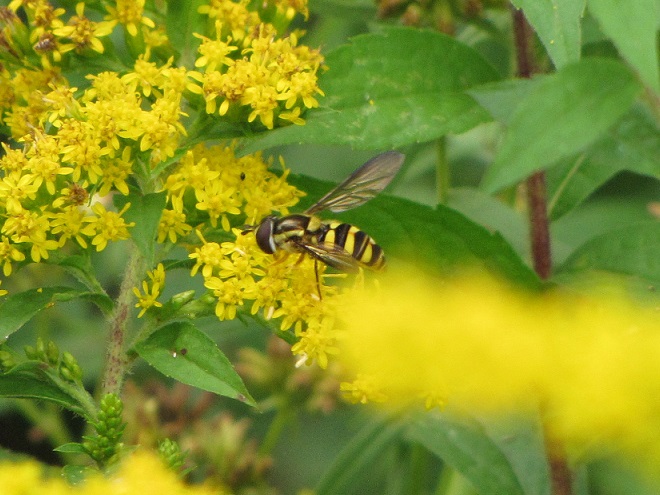
TACHINID FLIES
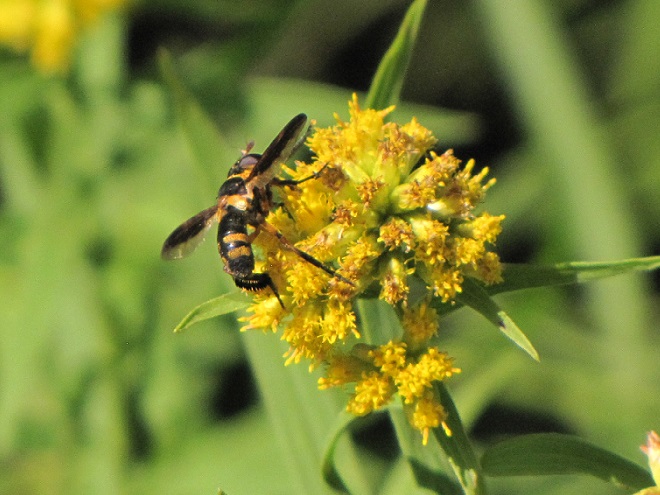
BEE FLIES
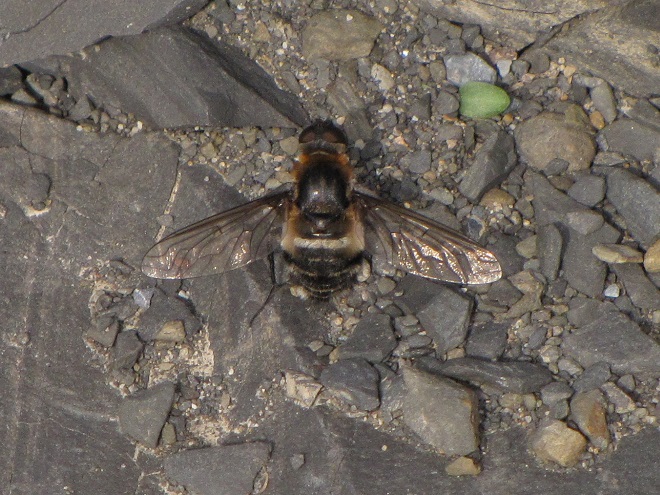

So let’s review. If you’re a poor defenseless fly and you want to get your fair share of sweets without being gobbled up by the beasts, then you’ve got to masquerade like a strongly armed member of a social colony—like a bee, wasp, or hornet. Now look scary and go get your treats. HAPPY HALLOWEEN!
